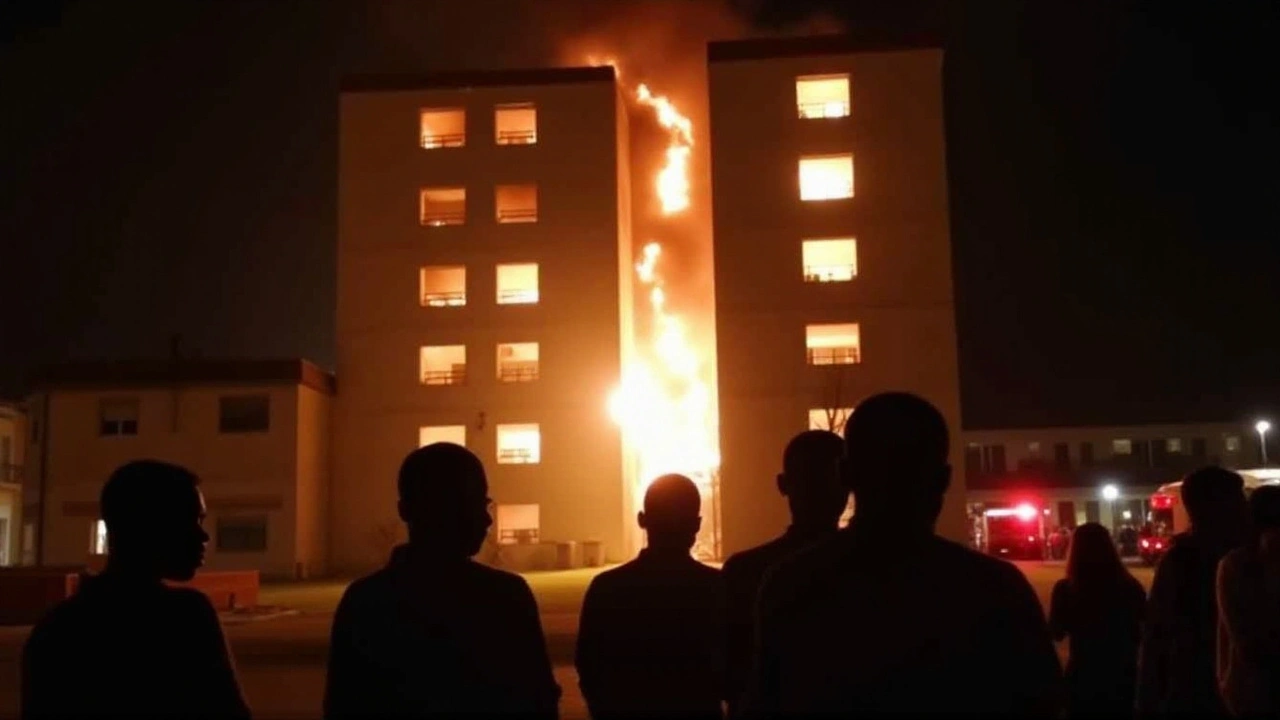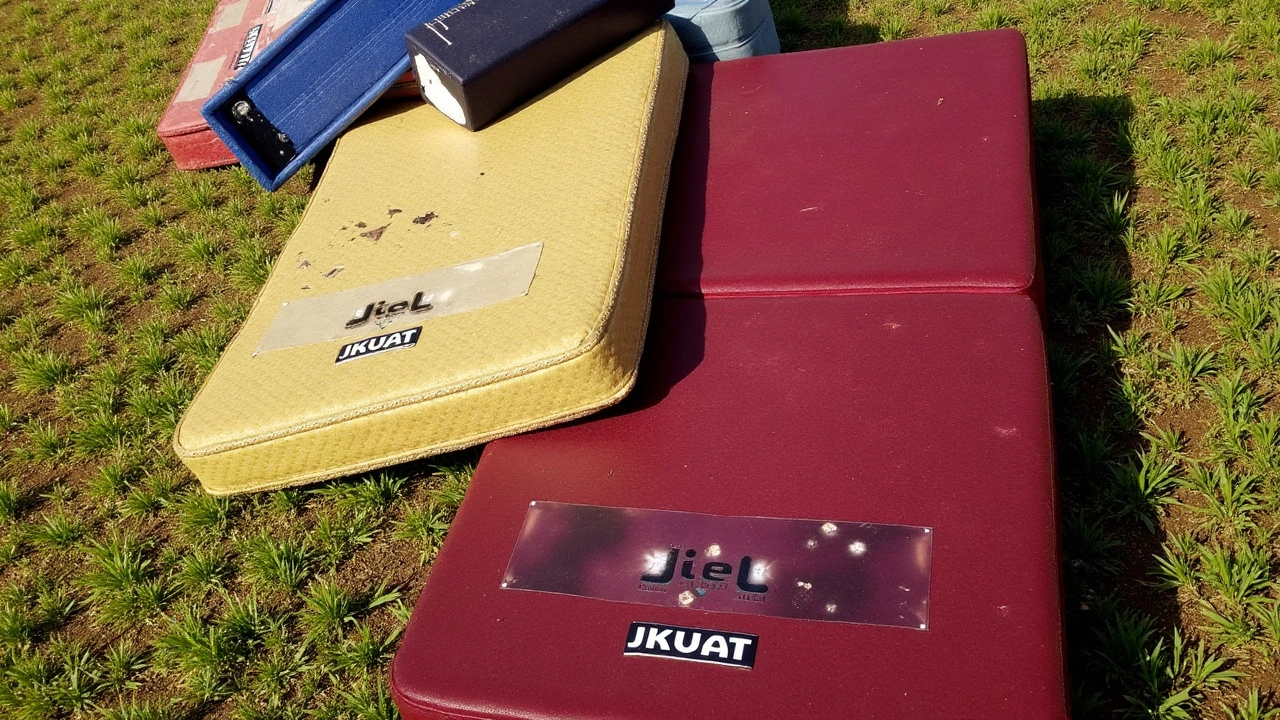Fire Incident at Jomo Kenyatta University: Students Hospitalized Amidst Investigation

In Local News
Unfortunate Turn of Events in the Early Morning Hours
The tranquility of early morning was shattered for the students residing at Jomo Kenyatta University of Agriculture and Technology's Hall 5, as a fire erupted, causing turmoil and panic. It was around 3 am, a time when many are deep in slumber, that the chaos ensued, forcing students to evacuate rapidly to evade the raging flames. The scene quickly transformed from a peaceful night into an alarming landscape of emergency sirens and fearful shouts, disrupting the lives of many young scholars. Despite the terror of the moment, the swift evacuation efforts ensured that the majority of students escaped harm.
However, the incident saw seven students sustain injuries severe enough to warrant hospitalization. It was a night many wouldn't forget as they bore witness to their shelter and belongings being threatened by the unpredictable elements. As the students regrouped, watching helplessly, videos captured the ferocious blaze enveloping parts of the building, leaving a lasting impression of vulnerability and loss.
Swift Emergency Response and Safety Measures
Amidst the pandemonium, emergency protocols were promptly enacted by both the university management and local disaster response teams. The prompt mobilization of firefighters and disaster management personnel ensured the fire was contained effectively, preventing it from spreading further and engulfing additional structures within the university premises. Their competent handling of the situation served as a crucial factor in minimizing potential casualties and property damage.
As rescue operations unfolded, the injured students were quickly transferred to local hospitals to receive medical attention. The university's administration demonstrated commendable efficiency in facilitating their transfer, addressing the immediate medical needs of their students, thereby reinforcing their commitment to student welfare.
Speculations and Social Media Buzz
In the aftermath of the fire, social media platforms became awash with speculative narratives surrounding the incident. A particular document, labeled as a 'warning letter,' gained traction online, suggesting prior awareness of a potential fire threat. This letter allegedly criticized the university's leadership for neglecting previous warnings and hinted at arsonist motivations potentially targeting thousands of students residing in the hostel.
However, these claims remain unsubstantiated as of now, adding a layer of mystery and causing unrest among the student body and their families. The anticipation of further details has sparked conversations regarding the adequacy of university safety measures and administration responses to potential threats.
Official Investigation Underway
The Directorate of Criminal Investigations (DCI) swiftly initiated a thorough investigation to uncover the cause of the unfortunate incident. Their focus extends beyond the immediate circumstances, striving to determine whether any negligence played a part and whether the fears of arson hold water. Their findings could potentially have deep implications for university policies and emergency preparedness strategies.
In the meantime, while the university administration has not issued a formal statement addressing the speculative claims circulating online, their priority remains focused on managing the aftermath of the fire and safeguarding their community. A high-level management meeting occupied their attention in the wake of the incident, seeking to both address and rectify the circumstances that led to such a disruptive event. As the investigation progresses, it is hoped that clarity will emerge, providing assurance to the students and their families.

Continuing Vigilance in Campus Safety
Such incidents serve as a stark reminder of the unpredictability and potential dangers within university environments. They highlight the imperative need for robust safety measures and emergency protocols that are adaptive to imminent threats. As Jomo Kenyatta University of Agriculture and Technology navigates through the consequences of this incident, it remains crucial for educational institutions to reinforce security strategies and cultivate awareness among their students and staff.
The long-term lessons drawn from this incident are yet to unfold, but there remains hope that increased vigilance and responsiveness will foster a safer academic community. It is essential for collective learning and adaptation to seamlessly transition from reactive to preventive, minimizing the likelihood of recurrence and fostering a sense of security and preparedness among all stakeholders.
Write a comment